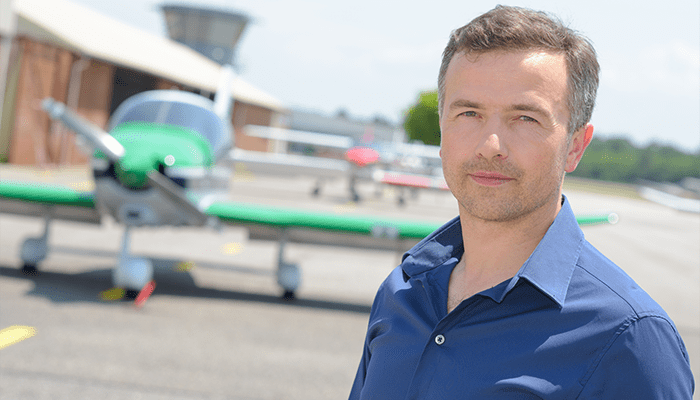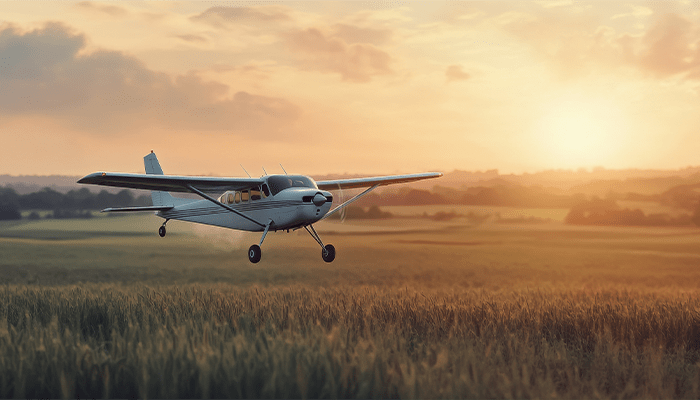
How the Aviation Insurance Market May (or May Not) Change in 2021
The turn of the new year is always a good time to reflect on the past and look forward to what the new year may bring. As aviation insurance professionals, we are left scratching our collective heads about all that transpired in 2020. The aviation insurance market in 2020 will be remembered for lack of underwriter flexibility and insurance company competition, the likes of which we have not seen in multiple decades. Premiums were up significantly, and underwriters returned to more traditional underwriting of pilots and overall risk. Needless to say, we are all looking to leave 2020 behind and move on to a bright and positive future.
The question is now – what will the aviation insurance market look like in 2021? Unfortunately, we expect many of the same market characteristics to continue into 2021. While it is tempting to blame the market on greedy underwriting, 2020 was not as financially rewarding for the aviation underwriters as you might think. Even with the premium increases the underwriters obtained, there were several market forces that left the underwriters with poor financial results:
- January 2020 – S-76 crashes into a hillside in Southern California, killing nine people, including Kobe Bryant.
- February and March 2020 – Tornadoes hit airports in Tennessee, Arkansas, and Louisiana. (It is expected that losses from the two items above will top $125,000,000)
- Fallout from the Boeing 737MAX losses continue to have an impact on our market. Between the Ethiopian Airlines and Lion Air aircraft crashes, and the Boeing products liability grounding losses for the 737MAX, the overall losses associated with the Boeing 737MAX is looking to be $2 billion, which is significant considering the worldwide aviation insurance premium is estimated to be less than $2 billion.
- The Coronavirus Impact – March 2020 saw the onset of the pandemic which resulted in an extreme slowdown in commercial aviation, especially the airlines. Recent information suggests that the airline sector is still operating nearly 60% below the same period last year. Airline liability premiums are often based on revenue passenger miles or other variable measures of activity. Underwriters were counting on increased airline premiums to improve their underwriting results in 2020 but instead had a significant shortfall.
The next big issue facing aviation underwriters in 2021 is reinsurance renewals. The aviation insurance companies purchase reinsurance to protect themselves from large losses, such as the Kobe Bryant helicopter loss and the Boeing 737MAX losses. As the large losses continue to hit the reinsurance market, the reinsurers will be passing along increased reinsurance premium to the aviation insurance companies. We have heard from several aviation insurance companies that are expecting 50% to 100% increases when their reinsurance renewals come due. No doubt that a portion of these increases will be passed along to insureds.
As aviation insurance brokers, the most frustrating aspects of the market in 2020 were the overall lack of competition among the carriers and the return to more restrictive underwriting. Most of the aviation insurance underwriters were content to sit on the sidelines in 2020 and only offer terms on their existing renewals, which in most cases only left us with one option for renewal. The lack of options was made worse by the underwriters returning to more traditional underwriting. Flexible pilot warranties were replaced by annual make and model specific pilot training requirements. Pilot age was again a hot topic for underwriters and an excuse to increase premium and lower limits of liability. The use of deductibles to lessen underwriter exposure was also back in play so just when we needed options, we did not have any.
This leaves many wondering what can be done to alleviate the issues associated with the current market. There has never been a better time to sell yourself and your operation:
- Highlight the steps you are taking to set yourself apart from other pilots or other operators.
- Talk about what you are doing to go above and beyond for recurrent training.
- If you have losses, explain the steps you have taken to mitigate the exposures.
- Ask your aircraft insurance broker if you can have a visit with your underwriter this year. An in-person visit is ideal, but even a video or conference call (given the COVID environment we have all become accustomed to) is personal and can have a positive impact on the underwriter’s interest in your business.
- Be sure to provide the requested renewal information to your aviation insurance broker; that information helps your broker sell you to the underwriters.
At AssuredPartners Aerospace, we have the experience and knowledge to help you manage a difficult market. To learn more about the best way to protect yourself on the ground and in the air, visit AssuredPartners Aerospace or contact our team of aviation professionals.

Featured News & Insights

The Broker of Record (BOR) letter is one of the most powerful and abused documents in the insurance industry. Unfortunately, many less-than-scrupulous brokers convince insurance buyers to sign this...

When most folks think of Personal Injury liability, they think of late-night commercials or unending billboards advertising personal injury attorneys who want to represent them when they have been...

The physical damage coverage on your airplane is a fixed amount of exposure. That is, the maximum you stand to lose is the value of the aircraft, which is known. However, with liability insurance,...